Painted patio ideas: 8 creative ways to update outdoor paving
Give your backyard a new look for less with these painted patio ideas

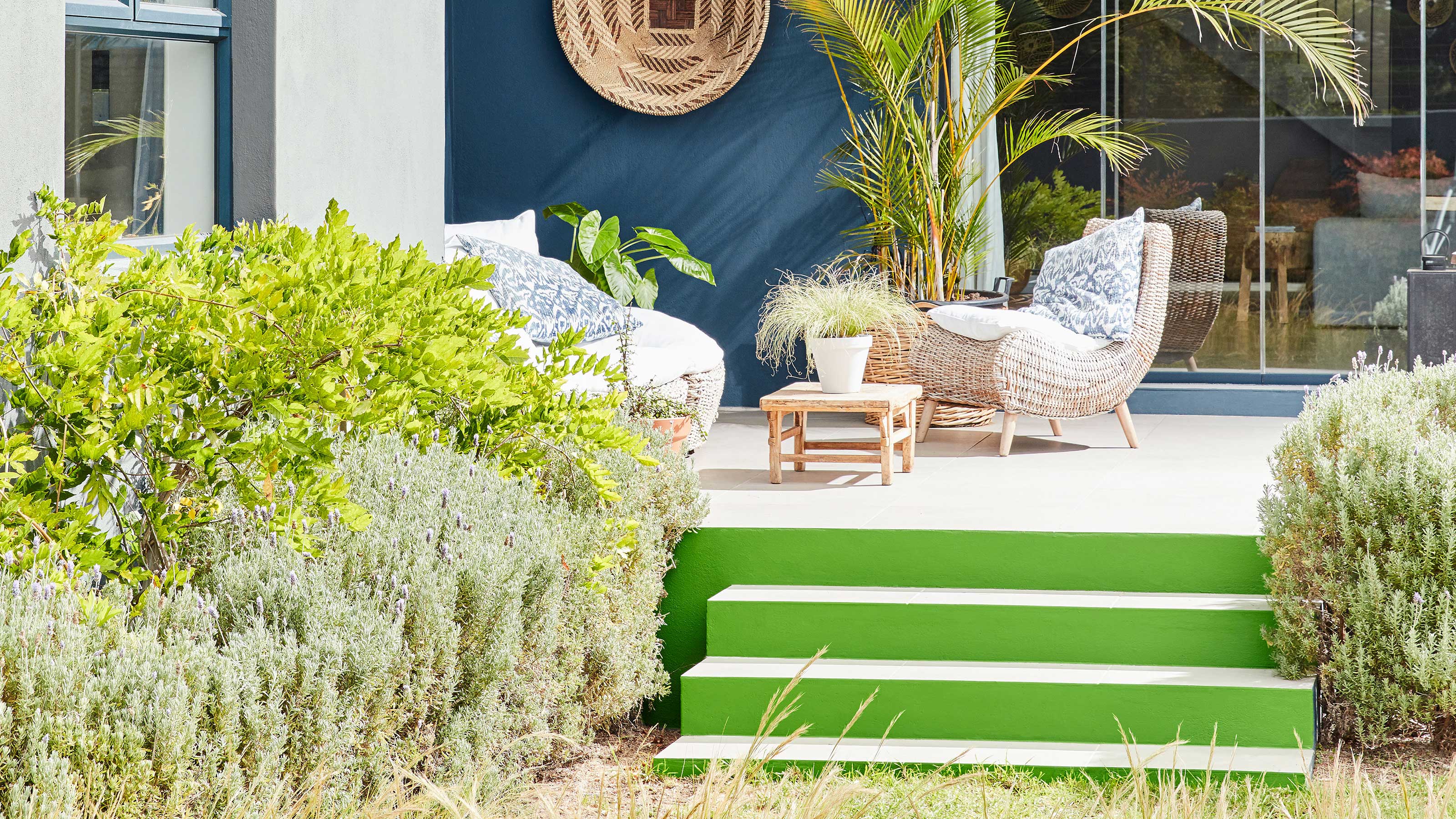
A painted patio is a perfect way to upgrade your outdoor living space on a budget. And there are so many different ideas to try, making it easy to enhance your existing scheme.
Whether you want to go for a simple block of color to complement modern patio ideas or something a little more creative, it will transform boring pavers into a fabulous feature. And of course, it's much cheaper than splashing out on new ones.
Before you get started, bear in mind that not any old paint will do. You'll need something durable, such as concrete or masonry exterior paint. And even with the right materials, fading is inevitable over time. This means it will require some maintenance to keep it looking crisp, but on a sunny weekend, it's a satisfying job. Plus, it gives you the flexibility to switch up the design when it's time for a refresh.
Perfect painted patio ideas for transforming your space for less
If you're looking for DIY patio ideas that have a show-stopping impact, these designs are sure to get you inspired.
1. Stick to block colors

A soft, earthy pink tone is the perfect match for this Mediterranean-inspired balcony garden, spotted at Chelsea Flower Show. Combined with ochre-colored planters, the space feels warm and inviting – even on cloudy days.
Just out of shot is a circular outdoor rug, which adds texture and pattern to the zone. It's a lovely way to pep up a boring concrete patio in a tiny plot.
2. Create a terrazzo effect
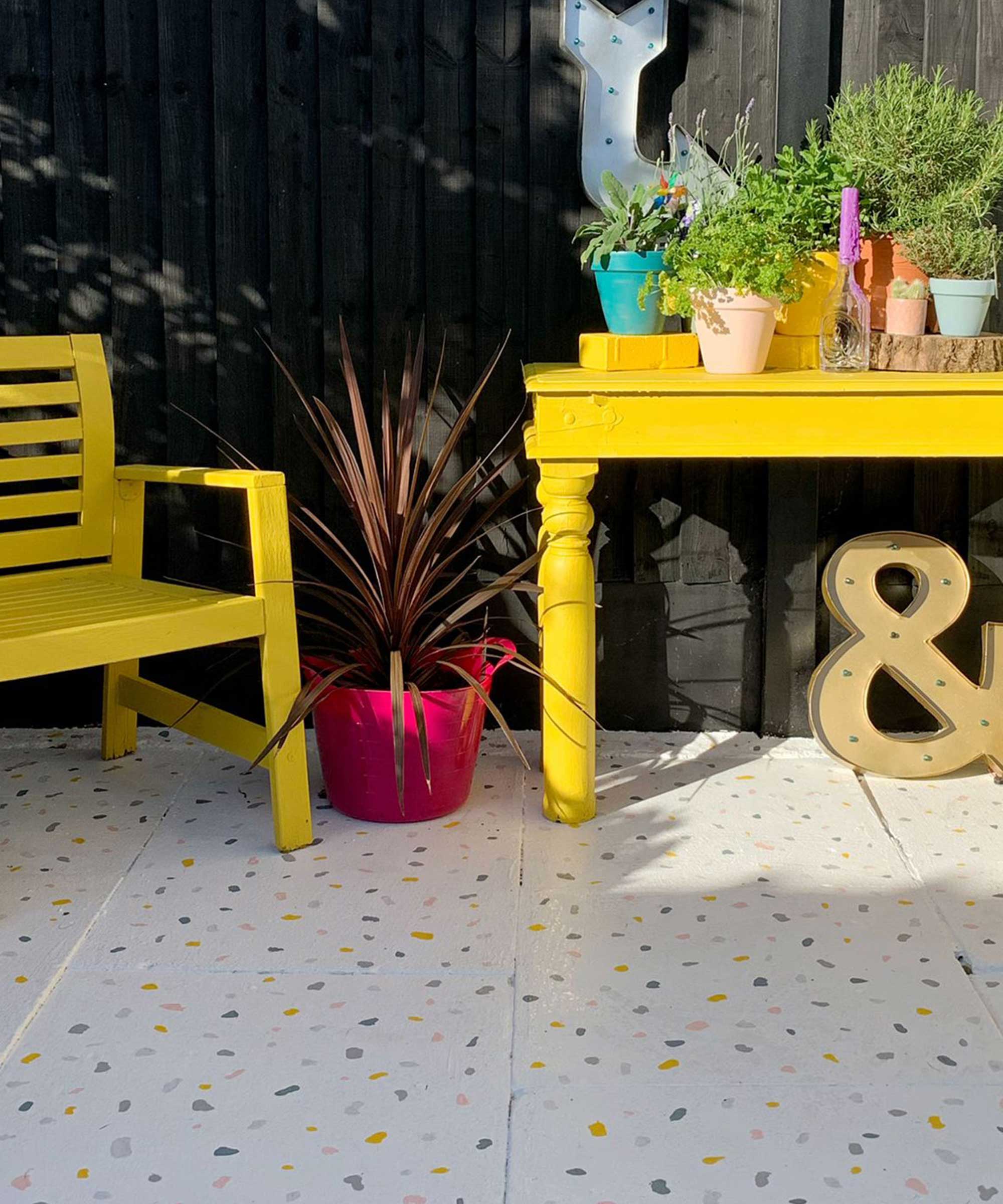
Colorful terrazzo is super on-trend and has been for a while. From countertops to floors and walls, it brings a playful touch to both interiors and exteriors – but there's no denying that it can be expensive to install.
If you love the look, this painted patio idea is for you. Simply give your patio a good clean using your best pressure washer, coat the pavers in bright white paint, then use a brush to create individual marks.
Stick to a minimal palette of three or four complementary tones to keep it looking sophisticated – the pastels used here are easy on the eye.
3. Use a stencil to paint a pattern
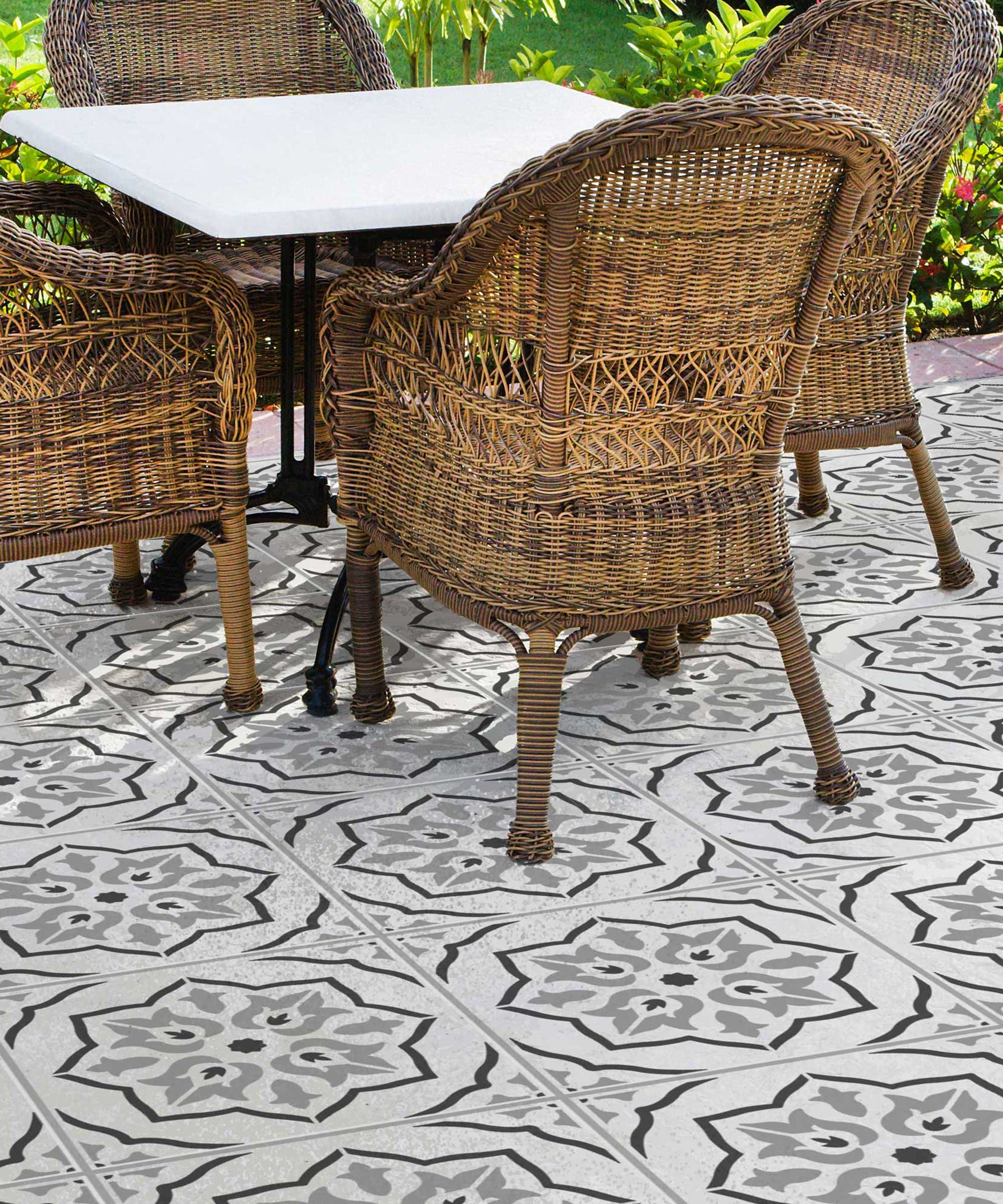
Another gorgeous, patterned approach that will pep up a budget patio – this design has been created using an inexpensive stencil and gray and black paint. It's a bit more time-consuming than some of the other painted patio ideas on this list – but we think the results are well worth it.
When it comes to patterned stencils, you're spoilt for choice. From Moroccan and retro styles to classical Victorian, it's easy to find a look that'll suit your garden design. And why stop with your patio paving? Stencils and a lick of paint can breathe new life into all sorts of outdoor features, from walls to furniture.
4. Add character with a colorful stripe
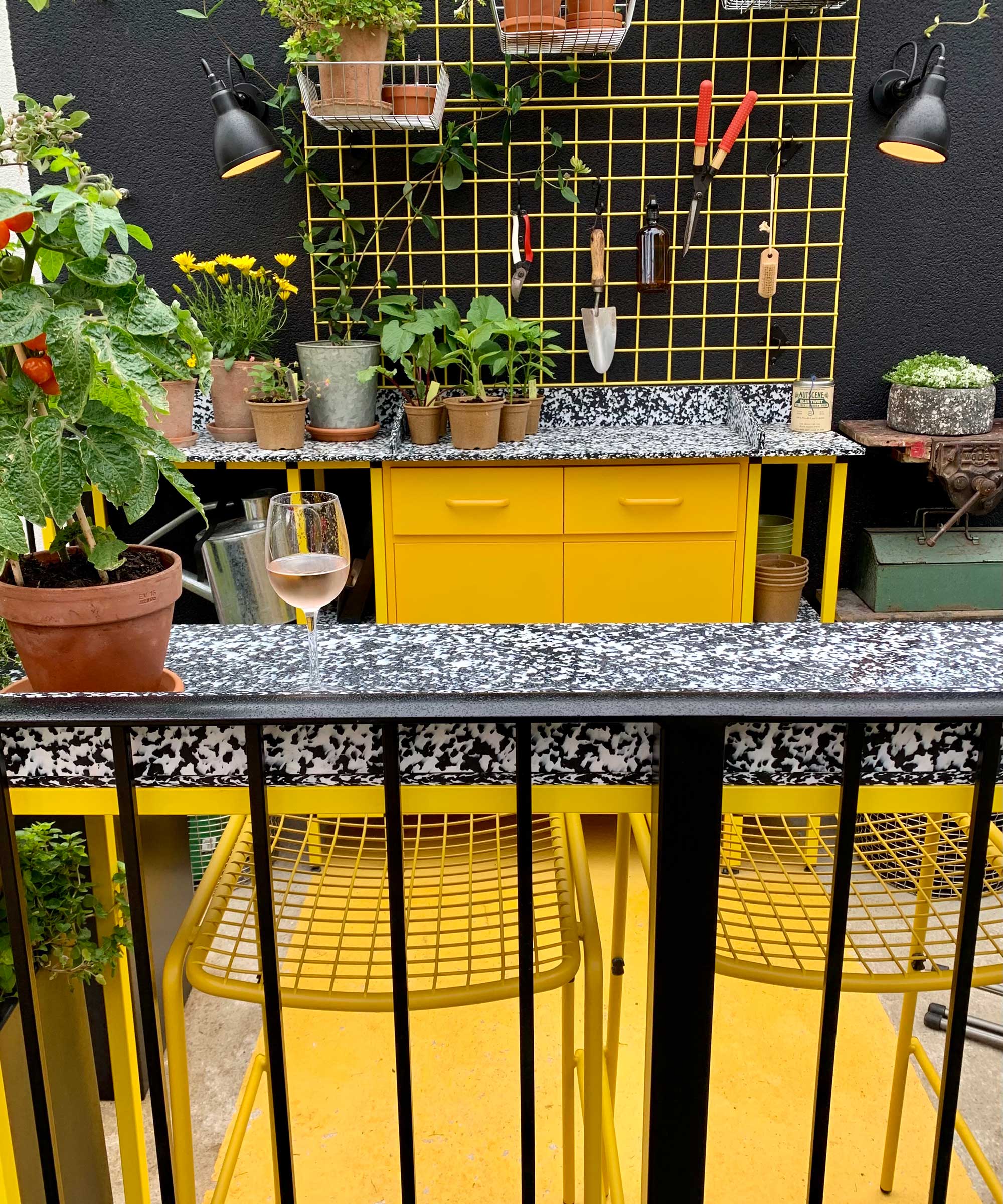
This is another stylish example of a balcony garden that utilizes painted patio ideas. The bold yellow stripe painted onto bare concrete is super simple – but it creates a big impact while maintaining some of that industrial edge.
Plus, it ties the whole scheme together, matching the metal fixtures and furniture. We love how it's been paired with black for a contemporary, urban look, while potted plants bring a natural element of color and texture.
5. Go for a duo-tone approach

If you want to give your patio an update but don't have time for stencils or brushing on details by hand, then try this approach.
Not a fan of the blue? Try a more subtle combination of grays or earth tones. Whatever duo of colors you choose, the result is bound to be a talking point.
Stagger the use of color at random rather than sticking to a regimented layout for a more unique and playful feel. It works especially well in this garden due to the mix of paving shapes and sizes.
6. Pep up your patio steps
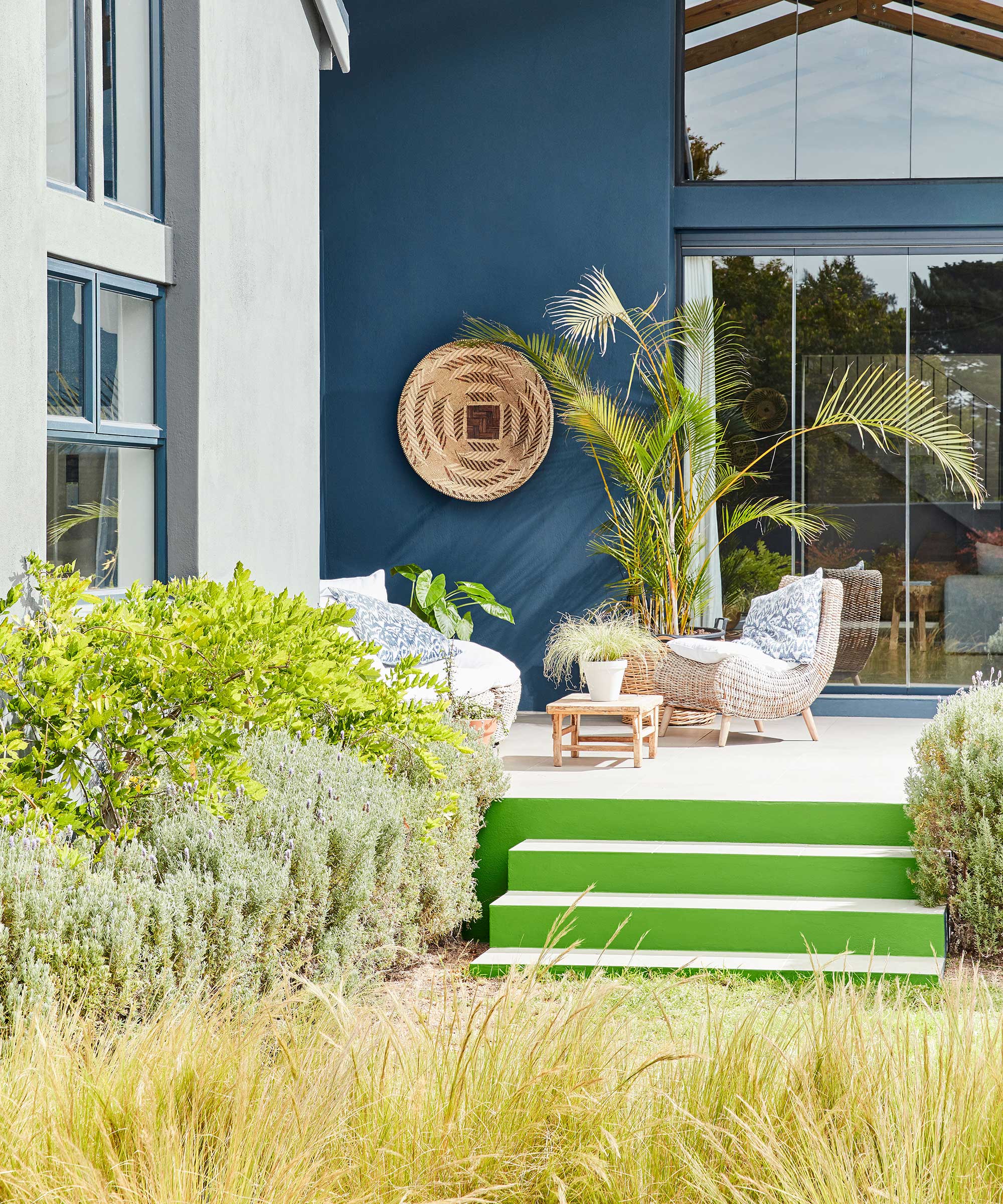
If you've got a raised patio, then don't overlook the garden steps leading to it. These can be easily transformed with a few coats of paint and will set the tone for the space.
This set has been given an update with a bright green tone. It looks fantastic against the cool white pavers and offsets the surrounding foliage beautifully. Painted risers, rather than treads, will suffer less from wear-and-tear, but as demonstrated, it still creates an impact.
7. ...and patio pots

Your patio pavers are just one element that can be given an update with a lick of paint. Why not give your planters or furniture an update, too? Or, take a cue from this elegant space and add a matching color block detail to the exterior of your home.
'Opting for a bold splash of color to create a painted feature, such as a fence or bench, can bring an air of excitement and liveliness to your outside space,' says Tobie Lewis of Valspar Paint.
He suggests using teal or pink to complement flower beds and amplify their natural beauty, or bright colors, such as zesty orange, to contrast against greenery and create a 70s retro theme.
Or, for a relaxing space to sit and recenter, Tobie suggests using a subtle earthy tone alongside a wash of pale blue and painting the patio floor in a gentle pinky-peach.
8. Paint on an outdoor rug
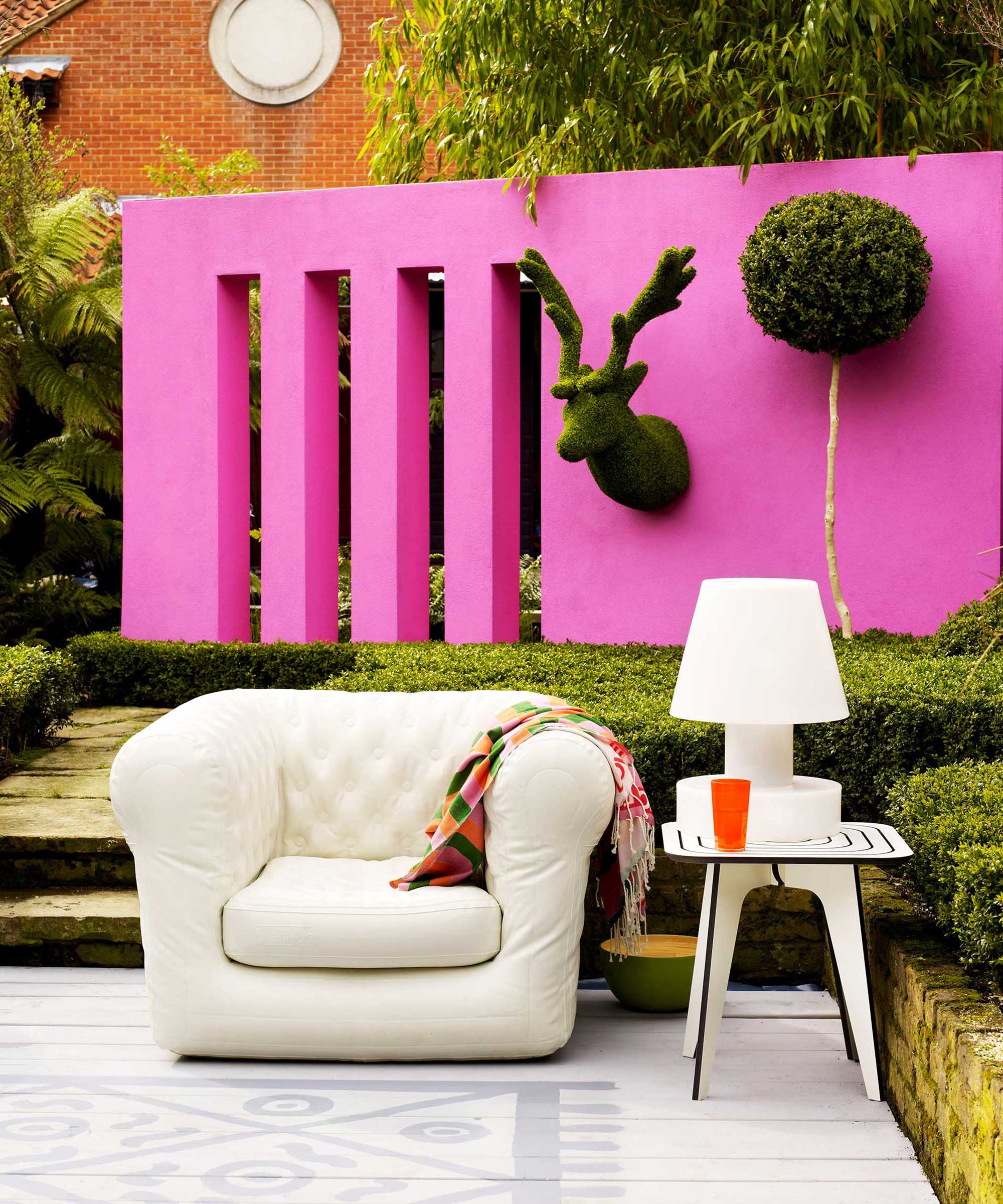
This painted deck idea would also work for a patio as a quirky take on an outdoor rug. The premise is simple: rather than buying one – simply create your own.
If you're feeling artistic, you can get creative by adding tassel details and patterns by hand. Alternatively, a rectangle, square, or circle of block color or chunky stripes will add a stylish feature to the center of your outdoor living space.
How do you paint a patio?
Painting a patio requires a little preparation and the right materials for the best results. Michael Rolland, DIY expert and MD of The Paint Shed shares his tips on how to do it:
- Prepare the surface: First, clear the area. Then, clean your patio by giving it a good sweep and a wash. 'Grease or oil on the surface will bleed through the new paint, interfering with the longevity of the paint and causing it to discolor, so it is important to remove this prior to painting,' he says. Additionally, 'if you have previously painted your patio, any old paint can be removed with paint-removing solvent and scrapers. Although this can be a lengthy process, if you don’t do this, you can end up with bumps and an uneven texture on the surface.'
- Repair any defects: If your patio is made from concrete, clear out and repair any cracks, sanding them down once dry so that the surface is level.
- Get painting: Ensure the patio is completely dry before you begin. 'A hack to test the moisture content of your patio involves taping down a square of aluminum foil, leaving it for 24 hours, and then removing the square. If the ground is fully dry there should be no condensation on either the concrete or the foil,' says Michael. When it's ready, put down masking tape and old sheets to protect the surroundings, and start painting. 'Opt for a long-handled brush or a brush-length extender to make painting less stressful on your knees and back. Start in one corner of the patio using even brush strokes, and work your way outward,' he says. 'Remember, it's better to apply several thin coats, rather than one thick coat,' – let it dry completely in between each layer.
- Add a sealer: To increase the durability of your design, consider applying a sealer as a final layer. 'A sealer can help protect against the normal wear-and-tear of everyday life,' says Michael. 'These increase water resistance and provide extra protection against dirt, oil, and stains.'


The garden was always a big part of Holly's life growing up, as was the surrounding New Forest where she lived. Her appreciation for the great outdoors has only grown since then. She's been an allotment keeper, a professional gardener, and a botanical illustrator – plants are her passion.
